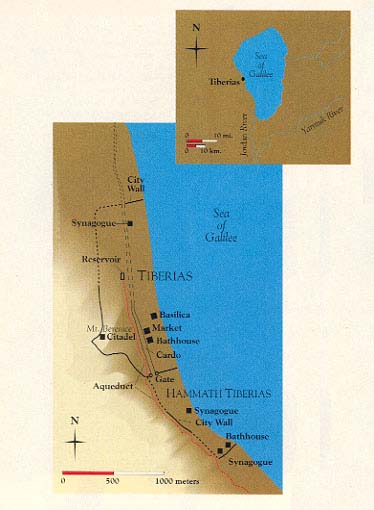Image Details

Ancient Tiberias, though only about 1,000 feet wide, was a planned, orderly city in the finest Roman tradition. Two rounded towers flanked an impressive gate on Tiberias’ south side. Immediately inside the gate began the city’s main northsouth street, or Cardo. The Cardo was colonnaded and paved with basalt slabs; a colonnaded portico joined the Cardo with a row of shops on either side. A roofed market, a bathhouse and a basilica, apparently the city’s administrative center, were excavated between 1954 and 1956.
One of 13 synagogues known from literary sources was excavated in 1978, on the north end of ancient Tiberias. It contained a Greek dedicatory inscription flanked by two common synagogue symbols, the lulav (palm branch) and etrog (citron), both used in the festival of Succot (Tabernacles). Rounding out the city’s public works was a 10-mile-long aqueduct, which brought fresh water to a reservoir in the city center.
